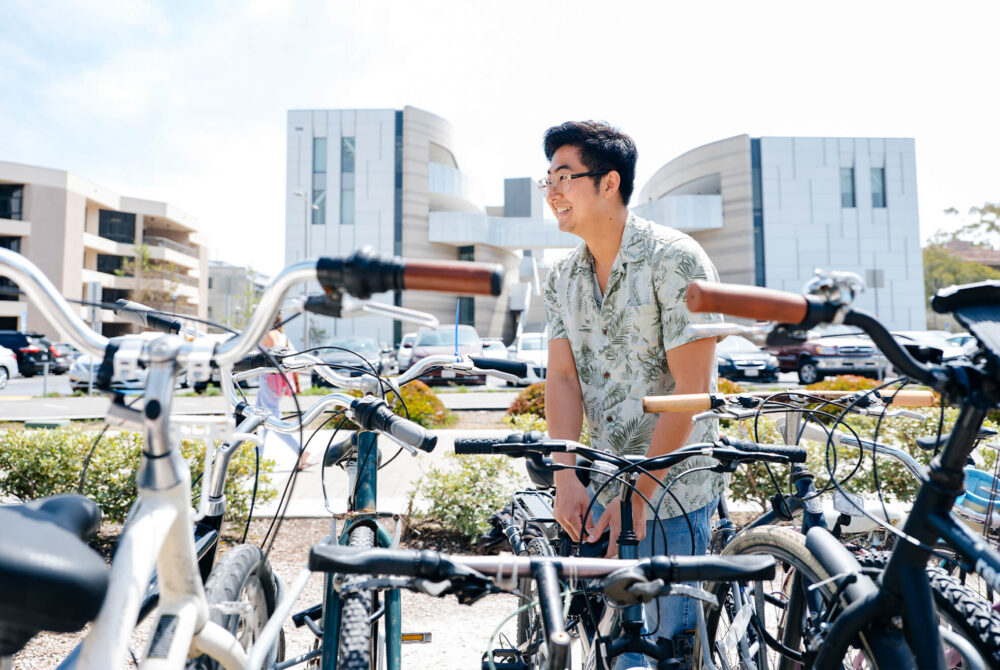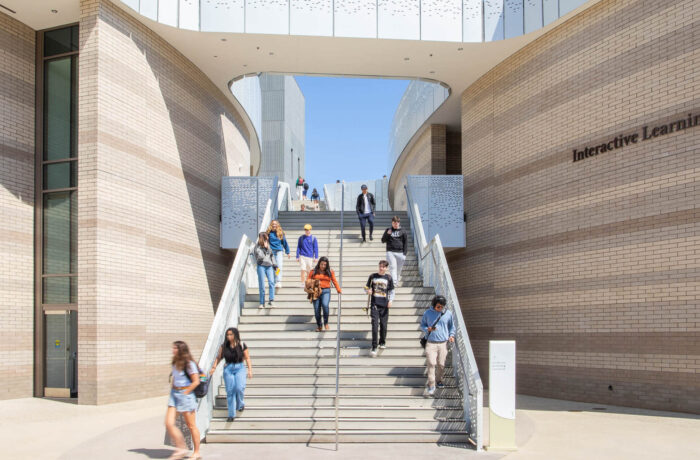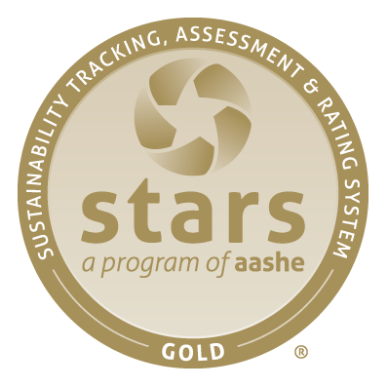UC Santa Barbara took significant steps toward climate resilience in 2023 with a dynamic team of UC Climate Action Fellows, Environmental Health and Safety, Campus Planning and several faculty leaders. UCSB completed its first sea level rise adaptation strategy and started developing a climate-focused hazard vulnerability and risk assessment process.
UCSB continues to increase LEED projects on campus. The new Interactive Learning Pavilion is targeting a minimum of LEED Gold certification and is designed as an all-electric facility. In addition, students in the Bren School of Environmental Science and Management completed a decarbonization study for UCSB Housing, Dining and Auxiliary Enterprises, an important step toward a campuswide decarbonization study that will be completed in the coming year.
Read More about Sustainability at UC Santa Barbara
The UCSB Sustainability Department is dedicated to the service of students and was recognized as such this year. Sustainability Director Katie Maynard received the Unsung Heroine award from the UCSB Professional Women’s Association for her dedication and outstanding contributions to the University and its students. The Food Security and Basic Needs Program, which UCSB Sustainability is a founding member and leader of, also received the William J. Villa Departmental Service to Students Award.
UCSB also maintained its recognition as a Gold-certified STARS campus, Platinum Level Bicycle Friendly University and Certified Bee Campus.

CLIMATE PROTECTION – EMISSIONS
* Interim goals for 2030, 2035 and 2040 to be developed through fossil-free planning that is underway at each location
** 90% direct reduction of total emissions from 2019 levels with residual emissions negated by carbon removal
UC Santa Barbara’s scope 1 and 2 emissions remained low with scope 2 emissions close to zero, while scope 3 emissions increased, largely due to commuting patterns that more closely resemble pre-pandemic patterns.
ENERGY – RENEWABLE energy use
ENERGY USE INTENSITY (EUI)
UC Santa Barbara saw an increase in its EUI in 2022.
FOOD
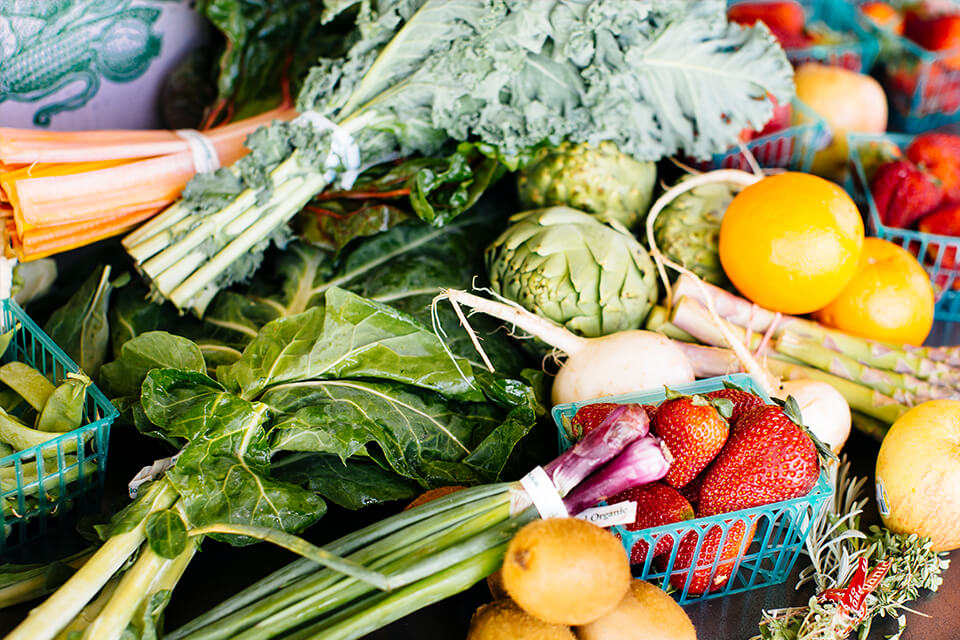
of food and beverage purchases met sustainability criteria ($1.4M)
of food and beverage purchases were plant-based ($4.5M)
Both the plant-based and sustainable food spend numbers are similar to last year’s for UC Santa Barbara. In 2022, the sustainable dining education program returned in the campus’s “all you care to eat” dining facilities.
Green building
UC Santa Barbara continues to increase LEED projects on campus, with all new buildings required to meet a minimum LEED Gold standard. The campus’s new Interactive Learning Pavilion is targeting a minimum of LEED Gold certification and is designed as an all-electric facility.
15 Platinum, 41 Gold, 15 Silver and 2 Certified
Total number of LEED certifications
procurement

green spend on electronics (73%)
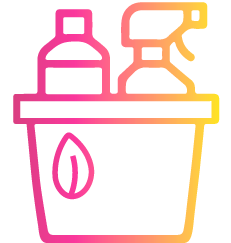
green spend on cleaning supplies (54%)

green spend on indoor office furniture (100%)

green spend on office supplies (99%)
The University reports on green spend, as defined in the Sustainable Procurement Guidelines, and reached out to suppliers for spend data in four product categories for this year’s report.
Green spend is defined as meeting preferred or minimum criteria in UC’s Sustainable Procurement Guidelines.
Suppliers reporting: Electronics (6), Furniture (1), Cleaning supplies (4), Office supplies (2).
UC Systemwide Spend Analytics category data provided by CalUSource.
Sustainable Building & Laboratory Operations
UC Santa Barbara’s LabRATS program focused on sustainable lab procurement during the 2022–23 academic year. Although most of the partnering labs were catching up after the pandemic and not ready to reopen their labs to focused lab assessments, the campus was able to conduct one Green Lab certification. UC Santa Barbara replaced three old inefficient ultra-low-temperature freezers with Energy Star models through its equipment rebate program.
total assessed green laboratories
Transportation
of students and employees are utilizing alternative commuting methods
EV charging ports
of all vehicles acquired in 2023 were electric (zero-emission), plug-in hybrid or clean transportation fuel
Based on its spring 2023 commuter mode split survey, over 80% of weighted faculty, staff and students used alternative transportation to commute to campus.
WATER
*Based on a 3-year average of fiscal years 2005-08
**2025 goal is a 36% reduction from baseline
Potable water use decreased by over 2 million gallons in fiscal year 2022–23.
ZERO WASTE – GENERATion
*These numbers might include a small amount of incineration that is being phased out.
**In 2021, waste generation per weighted campus user spiked due to pandemic-related closures as base-level operations continued but the number of users on campus decreased.
UC Santa Barbara has been working diligently on food waste reduction, specifically as it relates to California Senate Bill 1383. Campus food eateries and recovery programs have made great strides in reducing the amount of food waste.
ZERO WASTE – DIVERsion
*Waste incineration was counted as diversion prior to July 2022.
UC Santa Barbara increased its waste diversion percentage by 2% from last year. UCSB’s waste diversion efforts have seemed to plateau as a result of market changes. The local material recovery facility that UCSB and the County of Santa Barbara use is yet to provide comprehensive data to customers. Once this occurs, the campus anticipates that its diversion rate will increase.
Awards
In addition to maintaining its recognition as a Gold certified campus by the Association for the Advancement of Sustainability in Higher Education Sustainability Tracking, Assessment and Rating System, Platinum level Bicycle Friendly University by the League of American Bicyclists and Certified Bee Campus by the Xerces Society for Invertebrate Conservation, UC Santa Barbara was pleased that its sustainability director and the Food Security and Basic Needs Program were recognized for their excellent service to students.
A full list of awards is featured on the UC Office of the President’s website.
 Sustainability Annual Report 2023
Sustainability Annual Report 2023